The inescapable power of water on a landslide-prone street in Seattle
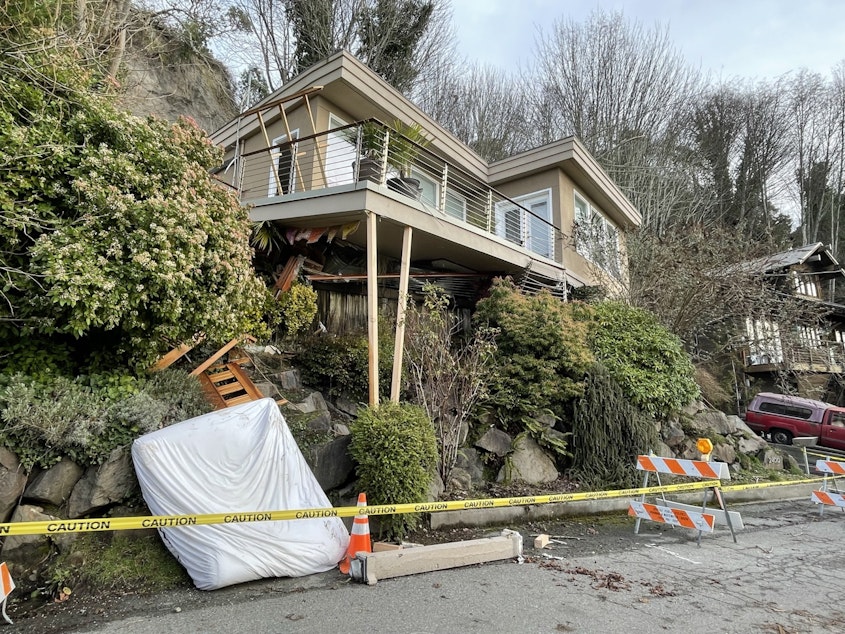
Some people in Bellevue's Somerset neighborhood were told to leave their homes Monday when a water main break caused a home to slide off its foundations and made the surrounding ground unstable.
A little over a week ago, it was rain that caused a home in Seattle's Magnolia neighborhood to slide off its foundation.
On steep slopes in Western Washington, people are trying to keep their land dry so they can avoid the same fate.
Perkins Lane is a tiny little street that runs along the side of Magnolia Hill. To the south, there’s a stunning view of downtown Seattle across Elliot Bay. To the North, there’s a steep hillside covered with trees and ivy and blackberries.
And everywhere you look, there’s water.
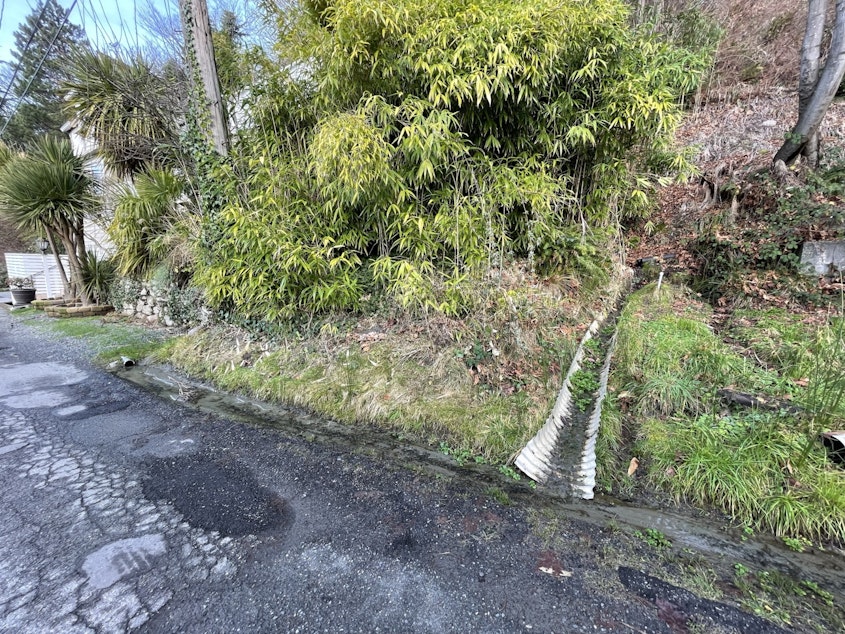
It spits out of pipes that poke out of the hillside. Where it pools in peoples yards, electric pumps help move it along. They discharge it into plastic corrugated tubes.
More water flows in little waterfalls over concrete retaining walls. These feed into an open channel next to the road.

In the channel, there’s a fine bed of silt. This is the hillside, broken down into microscopic pieces. People build little bridges over it to reach their front door.
Managing water is something every neighbor here deals with.
RELATED: Perkins Lane is Seattle's Poster Child For Landslide Risk
“There are underground springs — all here," says Carol Silverstein, gesturing at the hillside above where she walks her dog. "Most of us have dewatering wells."
Silversein says if you don’t manage the water, bad things can happen, and have happened.
“You can see some houses down there — I’m not even talking about the ones from 1996 that washed into Puget Sound. You go down there on the beach and you’ll see a house that’s collapsed.”
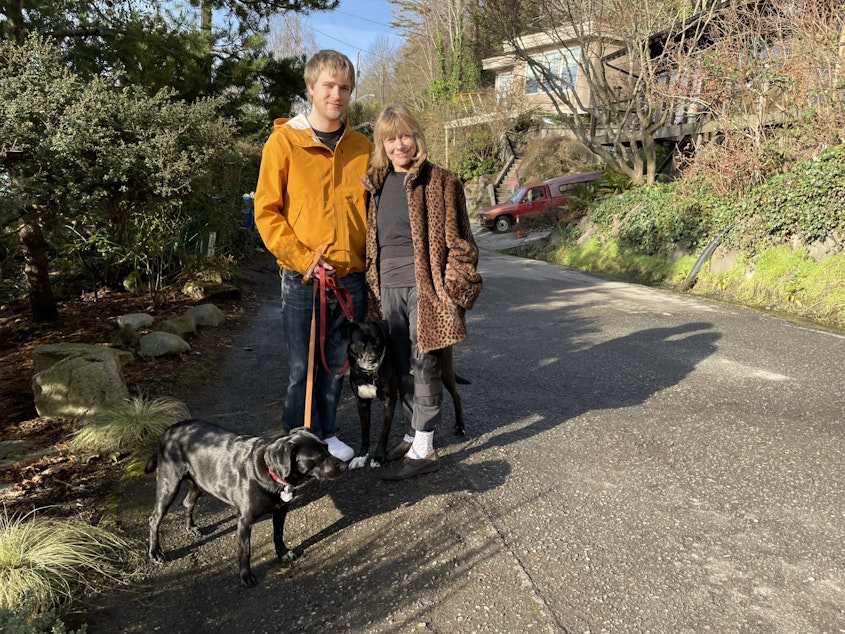
Silverstein is friends with the owners of the house that slid this time. A little over a week ago, they had plans to meet up.
“We were supposed to be walking the dogs together, and it started to rain, so I said 'Let’s bag it,' and there was a break in the clouds and I said 'Let’s go,' and I didn’t hear anything back.”
That’s when the landslide happened.
The owners got out OK, but their dogs were trapped beneath the wrecked home.
“Whenever these heavy rains hit — we’re all thinking about it," says neighbor Loren Hosford. "When that happened a week ago, you know, we all just looked at each other, like 'that’s what we’ve been worried about this whole time.'”
That worry is growing. And neighbors like Hosford and Silverstein must weigh the pros and cons of living here.
Sponsored
“It feels like when you’re on Perkins Lane you live out in the country, when you’re right next to the city, you can see how quiet it is here, but you don’t hear the city noises," Hosford says. "So it really is a retreat and an escape here, But it comes with its consequences. If these weather extremes continue like this — who knows? This could be much, much worse.”
“It’s really sad because we live in paradise here," Silverstein says. "And this is something that, you know, doesn’t happen every year. But we don’t know what climate change is going to do.”

S
cientists say climate change will bring more intense weather.
Greg Wessel is a licensed geologist who used to map landslide risk for King County. Now, he’s the president of Geology in the Public Interest. He knows exactly what happens when a big storm hits a steep slope in places like Perkins Lane.
Sponsored
“The soils get pretty saturated and the fluid pressure, or the 'pore pressure' in the soils increases to the point where the soil itself has no strength. And so, it will start to move, usually fairly catastrophically. ”
Wessel says making houses completely safe from these risks is expensive, and in some cases, impossible.
"When you have these really deep seated failures, you know, where huge masses of material are moving under a structure or adjacent to a structure, you really can’t stop them."
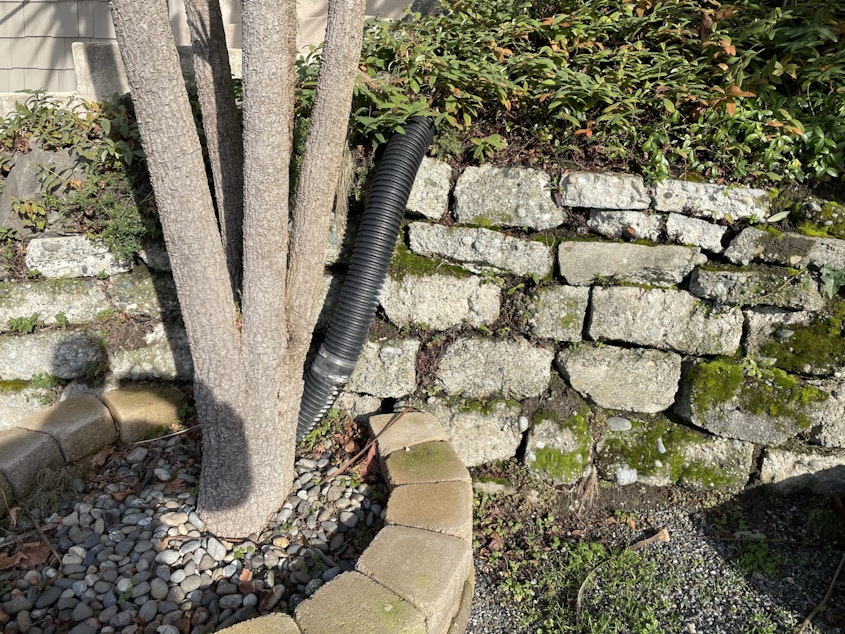
All you can do is try to mitigate the damage, he says, which means designing homes that let mud flow around them, or under them, or homes that slide downhill in one piece, protecting the people inside like a cardboard egg carton protects its eggs.
"I see the weather change as basically making it all worse," Wessel said of how climate change will influence things.
R
emember the dogs that were trapped beneath the house? Neighbor Rémy Olivier tells the story of what happened when he climbed into the wreckage with the owners.
“Me and the owners drilled some holes in the floor of this top floor, and put my dad’s stethoscope through, to listen for dog sounds, movement, heartbeat, anything. And I didn’t hear anything at all except the sound of water running in the house, in the trapped area. "
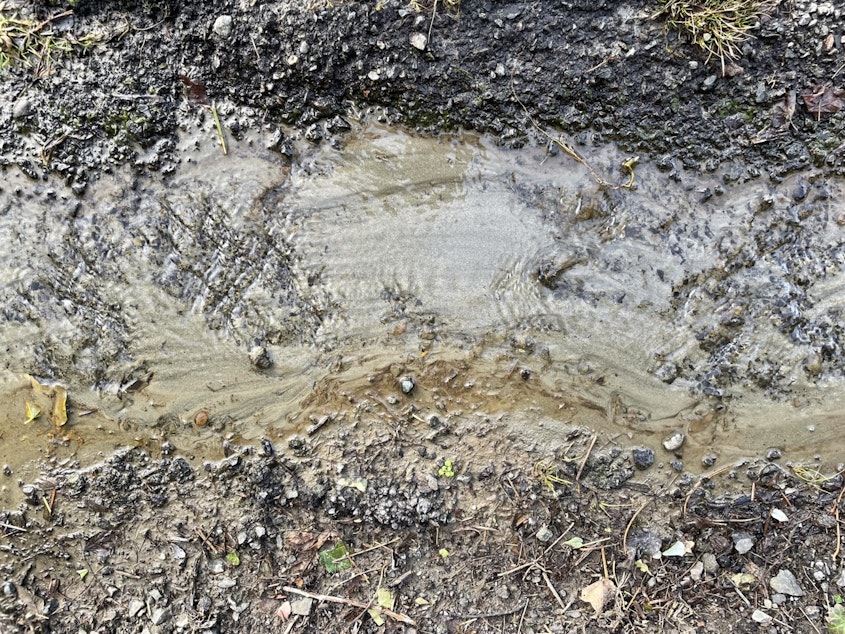
One of the dogs died. But the other lived.
"That running water is the only reason why she survived this long," Olivier said. "Those six days where she was trapped in this little coffin-like space, she was surviving on the rainwater coming down off this hill.
"And so when we heard the whining the next morning, it’s all thanks to this water.”
The water takes, and the water gives.
UPDATE: A second dog perished in the slide. The original story mentioned only the dog that lived.
The City of Seattle tracks landslide risks, along with other risks, at https://www.seattle.gov/hazardexplorer.
King County also tracks landslide risks. They can be found here. (Open the "Layer List" and check the box next to "Landslides." Best viewed on a larger computer screen, rather than a phone).
Note: Bellevue's Somerset neighborhood is not considered a landslide risk.




